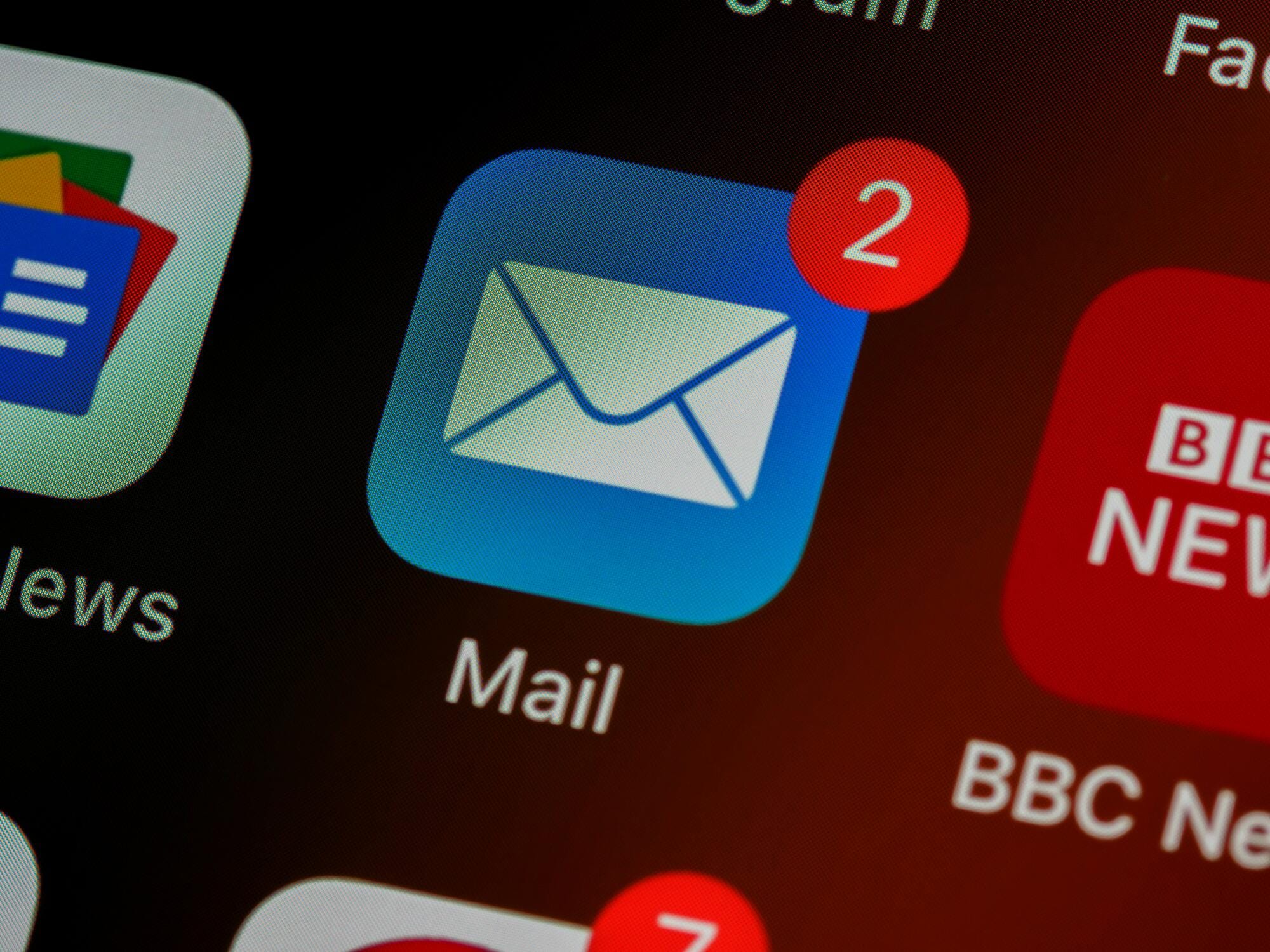According to Zapier, Gmail has more than 1.5 billion users, standing as the world's most popular email provider. It far surpasses Yahoo Mail, which has around 230 million active users. This popularity reflects each platform's distinct approach, from Gmail's integration with Google Services to Yahoo Mail's unique storage offerings.
Today, we're taking a closer look into Gmail vs Yahoo email to explore their differences in features, security, and overall user experience. It'll help you decide which platform suits your needs best!
Interface and User Experience
For anyone seeking a clean, minimalist interface, Gmail's approach focuses on simplicity. Its design removes unnecessary elements. That helps keep distractions low and makes essential functions easy to find.
Gmail's inbox categories like Primary, Social, and Promotions help users organize their messages automatically. The result is reduced clutter and a simpler way to prioritize emails. Its Smart Compose and Smart Reply features are intended to streamline email drafting by offering quick suggestions and enhancing productivity for frequent users.
In contrast, Yahoo Mail's interface is more visually oriented, with vibrant customization options. Users can personalize their inbox with themes, color schemes, and layout adjustments.
The focus on customization lets users create a more personal inbox space. Yahoo also offers helpful organizational tools. They include things like customizable folders and a convenient "Views" tab that groups attachments and subscriptions separately. So it's easy to find photos, documents, or newsletters.
Message Management
Each platform also has unique features for managing messages. Gmail's conversation view is popular for keeping email threads together, making it easier to track back-and-forth conversations. Yahoo Mail, however, includes a unique "Unsubscribe" button directly in the inbox, allowing users to manage unwanted emails with a single click.
The design choices highlight the platforms' different priorities: Gmail aims for efficiency and minimalism, while Yahoo focuses on a personalized and visually rich user experience.
Storage Capabilities
Gmail features 15 GB of free storage, which is shared across Gmail, Google Drive, and Google Photos. While this setup works well for users who benefit from Google's ecosystem, it can become a limitation for those who require more space for email alone. For added storage, Gmail users have the option to upgrade through Google One, offering plans that extend storage beyond the standard limit.
Yahoo Mail sets itself apart by providing a much larger free storage capacity. With 1 TB of free space, Yahoo Mail users can keep a large volume of emails and attachments without worrying about hitting a limit.
Its ample storage is beneficial for users who often deal with large attachments or who prefer to keep all their messages without deleting them. Yahoo's focus on generous storage options makes it an appealing choice for those who value keeping everything in one place.
Each platform offers distinct storage capabilities that reflect their broader design goals. Gmail's approach encourages integration with Google's other services, creating a streamlined environment for managing various files, photos, and emails.
Yahoo's storage strategy centers on providing more space directly within the email platform, allowing users more freedom without the need for frequent upgrades.
Email Features and Integrations
Gmail stands out for its productivity-focused tools. They're supported by integration with Google Workspace applications.
The Gmail setup makes it easy to link emails with Google Calendar, Docs, Sheets, and Drive. This streamlines daily tasks and reduces the need to switch between multiple applications.
Users can schedule emails, apply labels for easy organization, and use Smart Compose to draft emails quickly. This interconnected environment caters to those who need an efficient email system that integrates with a suite of productivity tools.
Yahoo Mail advantages include an emphasis on personalization and multimedia. Users can access unique design options, such as custom stationery and themes, to personalize the look of their emails. Yahoo's attachment storage feature is convenient for managing large files and photos, supporting up to 100 MB per attachment.
It can be useful for users who want to store and share media-rich content without leaving their email platform. While Yahoo Mail includes its own calendar, the range of integrations is not as extensive as Gmail's. For example, Yahoo does not offer the same level of file-sharing or collaboration capabilities, as it lacks integration with major office productivity apps.
Specific Tools
Each platform also includes specific tools to help users stay organized. Gmail's search function is powerful, allowing users to filter by labels, date, attachment size, and even keywords within attachments.
Yahoo Mail provides a "Views" tab. It helps organize specific types of content like photos, documents, and newsletters. So it's then easy to locate items without complex search filters.
These different organizational tools highlight each service's approach: Gmail focuses on search efficiency, while Yahoo organizes content visually.
The platform differences in features and integrations reflect two unique paths. Gmail is designed to be part of a larger productivity ecosystem, fitting naturally into a professional or academic setting.
Yahoo Mail appeals to those looking for a visually rich email experience with more storage flexibility. That means it's ideal for users who prioritize media and personalization over advanced productivity integrations.
Security and Privacy
Gmail offers a range of security features, focusing on preventing unauthorized access and protecting user data. Its two-step verification option adds a layer of protection by requiring users to enter a second code after their password.
Gmail also uses machine learning to detect phishing and spam emails, making it easier to avoid scams. The focus on proactive security measures has helped Gmail establish a reputation for protecting user data, especially in light of Google's investment in cybersecurity.
Yahoo Mail provides several security options but has a different history regarding user privacy. The platform offers two-factor authentication, which allows users to secure their accounts with an added layer of protection.
Yahoo also has a unique Account Key feature, which lets users sign in without a password by authorizing logins through the Yahoo app. The feature can be convenient, but it also relies on having access to a mobile device. While Yahoo has improved its security protocols, past incidents, like the 2016 data breach, have raised concerns among users.
Gmail vs Yahoo Email: Ads and Spam
Gmail has a more streamlined way of displaying ads, placing them subtly within certain inbox categories, such as Promotions or Social, rather than the Primary inbox. Gmail's spam filters are robust, and it frequently updates its algorithms to catch new spam tactics.
The spam folder is accessible, allowing users to review flagged emails if necessary, though Gmail does a good job at keeping unwanted messages out of sight.
Yahoo Mail's ad setup is more noticeable, with ads appearing directly in the inbox and as banner ads on the web interface. It can be distracting for some users, as the ads tend to take up more screen space than those in Gmail. Yahoo does offer an ad-free version through its Yahoo Mail Plus subscription, providing an option for users who prefer a cleaner interface.
In terms of spam filtering, Yahoo Mail performs well and places spam messages into a separate folder, similar to Gmail. While effective, Yahoo's spam filters are not as well-regarded as Gmail's and may require occasional manual review to catch missed spam.
Gmail vs Yahoo Pros and Cons
Gmail's biggest strengths lie in its streamlined design, powerful search tools, and integration with Google Workspace. For users who rely on productivity apps like Google Calendar, Drive, and Docs, Gmail provides a seamless experience that keeps everything in one place. Gmail's interface is simple, and its ability to categorize emails automatically makes inbox management easier.
However, Gmail's free storage is shared across Google's ecosystem, which can become limiting for users who accumulate a large number of emails and files.
Yahoo Mail stands out with its generous free storage and customization options. With 1 TB of free storage, users have the freedom to keep a large volume of emails and attachments without frequent deletions.
Yahoo's focus on personalization provides a more visually rich email experience that appeals to those who prefer a colorful inbox. But Yahoo Mail's ads are more visible in the inbox. That can feel intrusive.
And its lack of deep integration with popular productivity tools may make it less convenient for users who need those features.
In choosing between Gmail and Yahoo Mail, users should consider what matters most to them. Gmail offers a structured, productivity-focused experience with advanced tools. So it's ideal for those who work across multiple apps.
Yahoo Mail provides a simpler setup with a strong emphasis on storage and personalization, appealing to users who want flexibility in managing large amounts of email and media without sacrificing space.
A Detailed Email Platform Comparison
In the debate over Gmail vs Yahoo email, each platform shines in different areas.
Mailstrom empowers you to control your inbox, offering tools that enhance, rather than replace, your judgment. By grouping related emails, Mailstrom lets you handle hundreds at once, using your preferred email management style. With Mailstrom, reaching Inbox Zero is achievable, using intuitive features that align with how you work best.
Get in touch today to find out how we can help clear your inbox!



